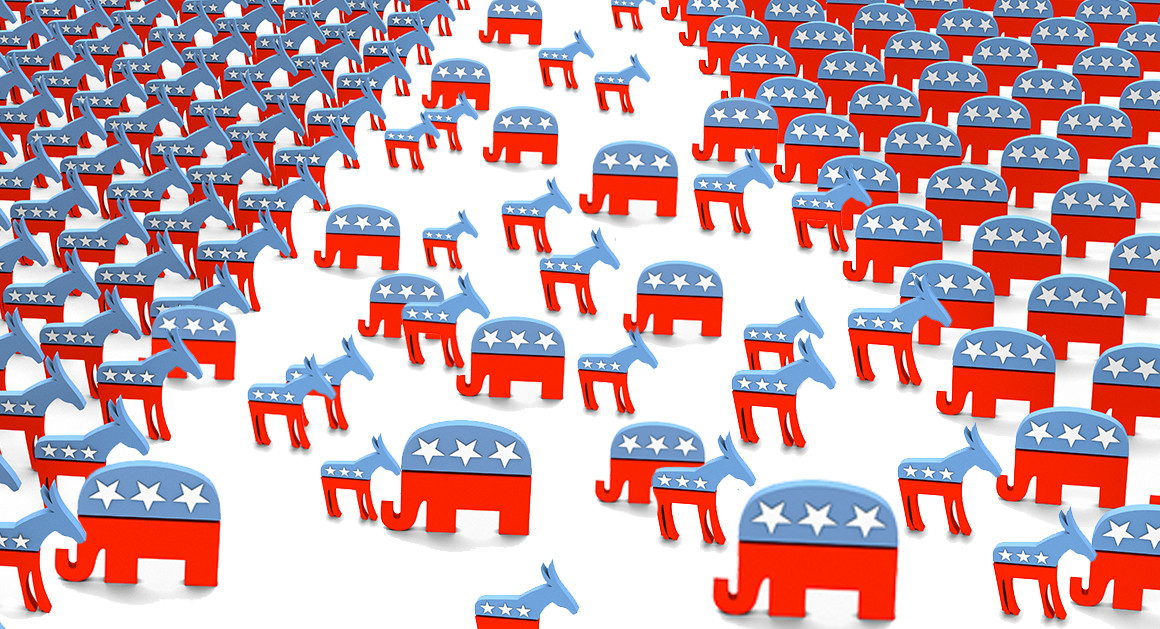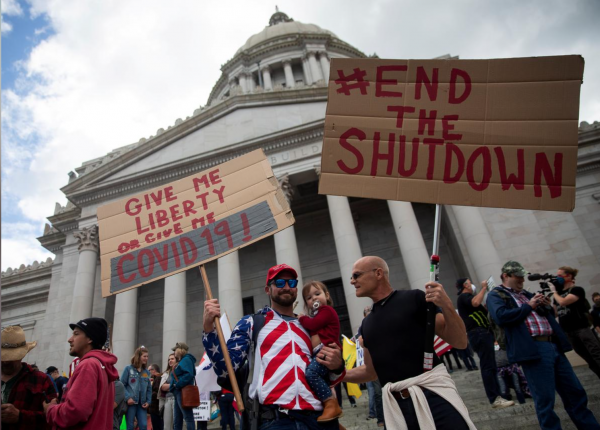Trump has authority to act, and he should.
Madison Wins, Factions Lose

This extended republic, mess that it is, is still the last best hope for freedom on this earth.
The first election under the Constitution was held 232 years ago. It was the least contested, least partisan contest in its history. Oh, to live in such a time! We have just come through one of the most partisan, most hotly contested, and soon to be most litigated elections in this country’s history.
The Constitution of the United States has been under stress lately. People have criticized the Electoral College, made plans for packing the Supreme Court, and even questioned whether the whole thing should be abandoned or replaced. The tedious process of counting, the inconsistent rules and procedures across the country, and the legal disputes that will no doubt ensue might embarrass even the most patriotic American.
The partisan divide in the country is now, in the most contested states, as close to 50/50 as it has ever been. Litigation, recounts, and runoffs may leave in suspense the exact details of who will win what seats and which parties will control which legislatures. We won’t know who won what for a while. Yet despite all this uncertainty there is one clear winner: James Madison.
With John Jay and Alexander Hamilton, Madison wrote the Federalist to convince voters in New York State to ratify the proposed Constitution. Published on November 22, 1787, Federalist #10 introduced the most daring of Madison’s ideas: the “extended republic.” In defiance of every author before him, contrary to conventional wisdom as old as the earliest Greek democracies, Madison argued that making the country larger would overcome the one problem that destroyed all democracies before this: the creation of permanent factions.
All factions try to capture political power to their own ends. Permanent factions—like farmers vs. merchants, or debtors vs. creditors—are hardened into their positions and cannot compromise. Madison’s innovation was to expand the size of the country so much (to a population of almost 4 million in 1790!) that most people would be members of several different factions at the same time.
One farmer might be a Catholic, another an Anabaptist. They could agree on exporting their grain, yet disagree about liquor laws. They might have common interests in one area, but conflicting interests in another. Extend the republic far enough, and there will be so many overlapping interests that no two people will be on the same side of more than one issue: “Extend the sphere, and you take in a greater variety of parties and interests; you make it less probable that a majority of the whole will have a common motive to invade the rights of other citizens” Hey, presto! No permanent factions.
Madison feared that permanent factions would develop around property and the means of acquiring it. The Civil War would demonstrate, tragically, the wisdom of this fear. But the new danger is identity politics: the sorting of people by immutable categories of (for instance) race. Identity politics seeks to form permanent factions. Note the reaction when BLM proselytizers hear anyone say, tentatively, that perhaps all lives matter. “No!” What they want is to establish a permanent faction, a group of people who cannot mix, cannot associate, cannot compromise with the rest. For Ibram X. Kendi, the lionized author of How to Be an Antiracist, there can be no compromise. As he has famously said, the opposite of racism is not “not racist.” It is “antiracist.”
The Ideologues vs. the People
But what have we seen in this election? Much to the frustration of some employees at the New York Times, exit polls show that Donald Trump increased his tally of votes among all minority groups. In fact, the only group who voted for him at lower levels in 2020 than 2016 was white men. As a cosmic prank that no one is ready to appreciate, white men likely cost Trump the election.
The extended republic is working out much as Madison expected. In a country this size with this many different needs, interests, and opportunities, no permanent faction can develop. Take Zapata County, TX, for instance. Here is a county that the Democrats have carried since Reconstruction, according to the Washington Post, and Hilary Clinton won in 2016 by 33%. Four years later, Trump won with 52% of the vote.
In The Emerging Democratic Majority (2002), Ruy Teixeira argued that rising numbers of Hispanics would give the Democrats a permanent hold on national politics. Eighteen years later, David Shor, the Democratic strategist hounded out of his job for suggesting that riots don’t help the Left win elections, says of the 2020 election: “The joke is that the GOP is really assembling the multiracial working-class coalition that the left has always dreamed of.”
Did Madison solve the problem of permanent factions? No, not really. Politics does not admit of solutions—only “remedies,” as he put it. What we see now is a different type of faction. The growing division in this country is between ideologues. Ideologues are committed to an unalterable way of looking at the world, a pre-packaged explanation that requires little to no thought to apply: “structural racism,” “heteronormativity,” etc.
The Left, holding the cultural gun emplacements of higher education and the legacy media, are the most prominent and organized ideologues in the country. Fortunately, they remain a distinct minority and are concentrated in the more rarified areas the of the country—those where people like to riot on a regular basis, such as Portland, OR. The irony is that they think they are the most educated, when they are really the least thoughtful.
Make no mistake: James Madison was no man of the people. He held no grand theory of the superiority of middle America, such as it was or might be today. The men and women of places like Zapata County, he reasoned, would be so busy getting on with their lives that they wouldn’t have time to think of themselves as a “demographic.” Who does? If you do, you’ve lost the thread already. Thinking first about whether one is white or black (or is it Black?) is to give in to the temptation to form permanent factions. One needs a certain amount of material luxury to get away with doing that today.
Republicans are certainly disappointed with the presidential election, just as Democrats are pleased. But Republicans did far better down-ballot than they expected, and the Democrats did far worse. Indeed, the knives are out as Democrats try to assign blame for such a poor showing. Ideological purity did not do well at the polls, as it turns out.
The parties may not like it, but factions in American politics are again rearranging themselves. We can see this in the response to COVID-19. The traditional limousine liberals have been joined by the new “laptop liberals,” those who can work from home and have other people bring them their groceries (just as others have been mowing their lawns for years). We see realignment, too, in response to the BLM protests and riots. The National Association of Police Organizations endorsed Donald Trump in July of this year. This is an organization that endorsed the Obama-Biden ticket in 2008 and 2012, and is now switching to Trump.
So, as we wait out the process that won’t even decide the fate of the Senate until after the Georgia runoff election in January, we can rest a little more peacefully knowing that Madison has continued to outwit the ideologues and factionalists. This extended republic, mess that it is, is still the last best hope for freedom on this earth. What else is there?
The American Mind presents a range of perspectives. Views are writers’ own and do not necessarily represent those of The Claremont Institute.
The American Mind is a publication of the Claremont Institute, a non-profit 501(c)(3) organization, dedicated to restoring the principles of the American Founding to their rightful, preeminent authority in our national life. Interested in supporting our work? Gifts to the Claremont Institute are tax-deductible.
Americans must recover their commitment to personal responsibility.
A conservative revolution is in order.
Two stormfronts are on a collision course over America. Where will it end?




